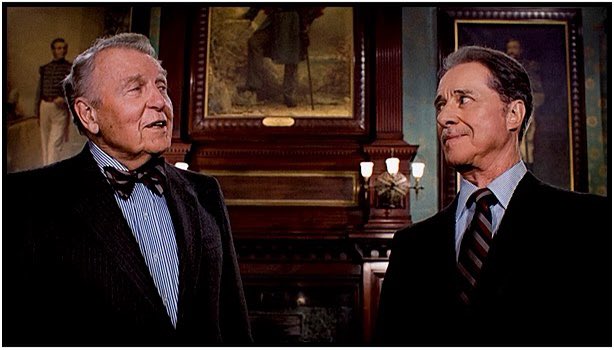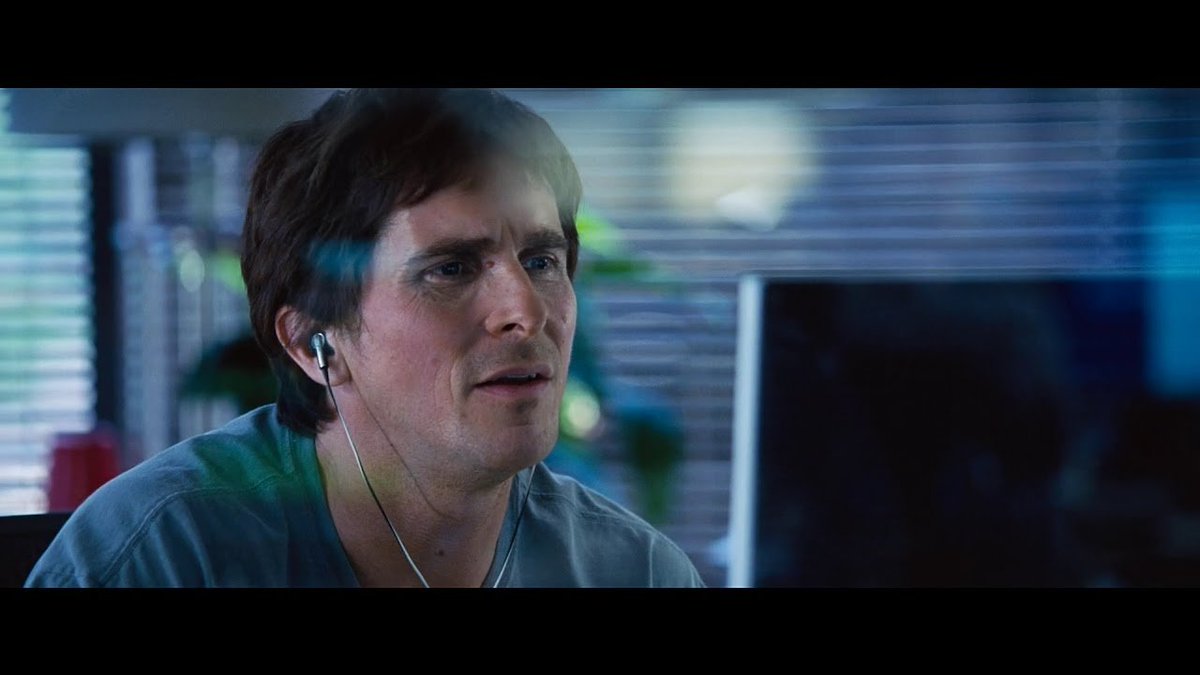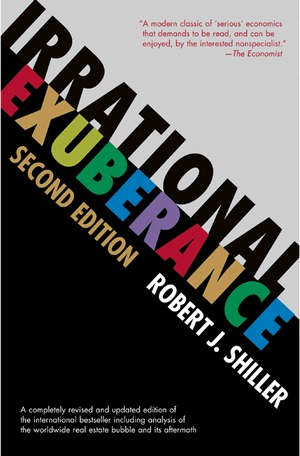
One of my favorite #Christmas-themed movies has to be Trading Places, the 1980s comedy staring Eddie Murphy and Dan Aykroyd
The last scene in particular is what got me hooked :) It’s that classic ending that keeps you wondering.
Wanna know how they did it?
Thread 👇🧵
The last scene in particular is what got me hooked :) It’s that classic ending that keeps you wondering.
Wanna know how they did it?
Thread 👇🧵

1/ we all know the story from Trading Places. Aykroyd plays a snobbish priviledged broker Louis Winthorpe ("the Third"), while Murphy plays a street con artist Billy Ray Valentine whose lives get reversed as a result of a bet between two cruel millionaires, the Duke brothers. 

2/ The Dukes own a commodities brokerage and have young Winthorpe as their managing director. When they encounter Valentine, while being falsely accused of trying to rob Winthorpe, they decide to conduct a social experiment…
3/ They switch the social status of these two men to determine which is more important: environment or heredity.
The winner gets - one dollar!
Winthorpe is framed with drugs and ends up in jail, losing his job, fianceé, house, and all his Harvard friends…
The winner gets - one dollar!
Winthorpe is framed with drugs and ends up in jail, losing his job, fianceé, house, and all his Harvard friends…

4/ …Valentine is given Winthorpe's job and all possessions, including the house and all its priviledges.
Once Winthorpe and Valentine realize the deceit they want to get back at the Dukes, and the best way of doing that is by bankrupting them.
Once Winthorpe and Valentine realize the deceit they want to get back at the Dukes, and the best way of doing that is by bankrupting them.

5/ How? Short-selling. Seasoned with some insider information of course
Before moving on, let’s explain the mechanism
Short-selling (naked) implies selling a security you *do not own* (you borrowed from your broker for a fee), with the obligation to buy it back at a later date
Before moving on, let’s explain the mechanism
Short-selling (naked) implies selling a security you *do not own* (you borrowed from your broker for a fee), with the obligation to buy it back at a later date
6/ It’s the reverse of normal trading. Instead of buying low, expecting the price to go up, you sell high, expecting the price to go down. When it does, you buy low to clear your position.
To simplify, you buy back to return the shares you borrowed.
To simplify, you buy back to return the shares you borrowed.
7/ If the price drops, you made a profit, since the cost of repurchase of the security will be lower than what you got for it. The higher the drop in price (spread), the more money you earn.
On the other hand if the price goes up, you can lose a huge amount of money.
On the other hand if the price goes up, you can lose a huge amount of money.
8/ Futures are great for shorting: contracts you can sell when you don’t own an asset.
E.g., selling 1000 pounds of oranges at $2 per pound in March means the seller is obliged to provide and the buyer is obliged to purchase the commodity three months from now, at $2 per pound.
E.g., selling 1000 pounds of oranges at $2 per pound in March means the seller is obliged to provide and the buyer is obliged to purchase the commodity three months from now, at $2 per pound.
9/ It doesn't matter how you get the oranges (or whatever) as long as you are able to provide ‘em at the designated time.
That's why the buy back is important - you still have an obligation to provide the stuff, and your buyers have an obligation to pay you at the agreed price.
That's why the buy back is important - you still have an obligation to provide the stuff, and your buyers have an obligation to pay you at the agreed price.
10/ now that we understand short-selling, let’s get back to the movie :)
The best way to profit from shorting is by being sure the price will go down. In other words, having some insider info.
In the movie the insider info comes from the Agriculture dept orange crop report.
The best way to profit from shorting is by being sure the price will go down. In other words, having some insider info.
In the movie the insider info comes from the Agriculture dept orange crop report.
11/ Once Billy Ray and Louis got the info (the gorilla train scene) they could set up their play.
First they feed the Dukes the false report, leading them to believe the harvest was bad and an orange shortage will follow.
The Dukes are expecting prices to go up (S&D)

First they feed the Dukes the false report, leading them to believe the harvest was bad and an orange shortage will follow.
The Dukes are expecting prices to go up (S&D)


12/ However the real report signals the opposite. The harvest was unaffected by the bad weather, and the supply will be plentiful
Hence the scope for shorting, as Winthorpe and Valentine know the price is likely to go down. And the Dukes will be on the opposite side of the trade
Hence the scope for shorting, as Winthorpe and Valentine know the price is likely to go down. And the Dukes will be on the opposite side of the trade
13/ Trading floor.
The Dukes tell their broker to buy as many frozen concentrated orange juice (F.C.O.J.) contracts as he can before the crop report is revealed to the public. They anticipate prices to go up after the report is revealed and are leveraged to make a killing
The Dukes tell their broker to buy as many frozen concentrated orange juice (F.C.O.J.) contracts as he can before the crop report is revealed to the public. They anticipate prices to go up after the report is revealed and are leveraged to make a killing
14/ Trading begins at 102 cents per pound (at 15,000 pounds of F.C.O.J. per contract).
Once everyone realizes the Dukes are trying to 'corner the market', they all try to get their hands on the contracts, driving the price up (via many buy orders, simple S&D).
Once everyone realizes the Dukes are trying to 'corner the market', they all try to get their hands on the contracts, driving the price up (via many buy orders, simple S&D).
15/ At the same time Winthorpe and Valentine are on the floor but are not selling yet. They have to wait for the price to go really high before they can start pushing it down.
Have in mind they need to maximize the high-low price spread.
Have in mind they need to maximize the high-low price spread.
16/ When the price reaches 142, that's when Winthorpe yells: "Sell [some quantity] in April at 142!"
Now they are shorting (step 1): selling futures contracts they don't hold. Yet. They are betting they’ll be able to buy the contracts back later at a lower price.
Now they are shorting (step 1): selling futures contracts they don't hold. Yet. They are betting they’ll be able to buy the contracts back later at a lower price.

17/ The other brokers are buying from them as they still think the price will go up (Dukes cornering the mkt)
However it’s going down. Again simple S&D. New supply of futures decreases the price. Trading continues until the crop report is revealed on TV. The price is back to 102
However it’s going down. Again simple S&D. New supply of futures decreases the price. Trading continues until the crop report is revealed on TV. The price is back to 102
18/ The real crop report reveales the harvest was good, the supply of oranges will be plentiful.
The over-inflated price starts dropping significantly as everyone starts frantically selling to get rid of their contracts and at least zero their position before trading ends.
The over-inflated price starts dropping significantly as everyone starts frantically selling to get rid of their contracts and at least zero their position before trading ends.
19/ The Dukes are in disbelief. Their broker is full of soon to be worthless contracts and is overcrowded by an army of traders quickly getting rid of their contracts.
Also, they bought on margin (high leverage), so they know what’s coming.
Also, they bought on margin (high leverage), so they know what’s coming.

20/ When the price falls down to 46, Winthorpe and Valentine announce their second important move (step 2: the buyback): buy at 46!
This is the spread they've been waiting for: 142-46. They have to buy a lot of these contracts to zero their position.
This is the spread they've been waiting for: 142-46. They have to buy a lot of these contracts to zero their position.

21/ They are basically the only buyers left on the floor. However it’s important they don’t buy directly from the Dukes' broker. They want him to keep holding.
When trading ends, the price is down to 29 cents per pound, and they've bought back all of their short-sold contracts.
When trading ends, the price is down to 29 cents per pound, and they've bought back all of their short-sold contracts.
22/ How much have they made?
Winthorpe mentiones they've moved around 20,000 contracts. They’ve sold short at 142 down to 102, and they've bought back at 46 down to 29.
Let’s say the average sell price was around 122 c p/p, where the average buy-back price was 37.5 c p/p
Winthorpe mentiones they've moved around 20,000 contracts. They’ve sold short at 142 down to 102, and they've bought back at 46 down to 29.
Let’s say the average sell price was around 122 c p/p, where the average buy-back price was 37.5 c p/p
23/ The spread is therefore 122 - 37.5 = 84.5 c per pound profit.
Per single contract this is 15,000 pounds x 84.5 c per pound = $12,675 per contract.
Multiply this by roughly 20,000 contracts and their total profit was: $253,500,000.
In just one hour on the floor :)
Per single contract this is 15,000 pounds x 84.5 c per pound = $12,675 per contract.
Multiply this by roughly 20,000 contracts and their total profit was: $253,500,000.
In just one hour on the floor :)

24/ The Dukes, on the other hand, faced a margin call of $394,000,000.
They went all-in, thinking they had a sure bet.
But as their asset value fell too low, the exchange announced a margin call, insisting they pay immediately. As they couldn't, they were bankrupt.
They went all-in, thinking they had a sure bet.
But as their asset value fell too low, the exchange announced a margin call, insisting they pay immediately. As they couldn't, they were bankrupt.

25/ Can this happen in real life? Nah :)
Circut breakers would stop trading when the price goes down too much. Even in the 80s, and especially today.
By then it would have been too late for the scheme to work and the Dukes would survive. Take a slight loss, but def survive.
Circut breakers would stop trading when the price goes down too much. Even in the 80s, and especially today.
By then it would have been too late for the scheme to work and the Dukes would survive. Take a slight loss, but def survive.
26/ That doesn’t ruin the movie though :) it’s still a timeless classic!
Thanks for reading! If you liked this, subscribe to my newsletter where I write about investing and predict markets with Oraclum: oraclum.substack.com
Thanks for reading! If you liked this, subscribe to my newsletter where I write about investing and predict markets with Oraclum: oraclum.substack.com
• • •
Missing some Tweet in this thread? You can try to
force a refresh
















